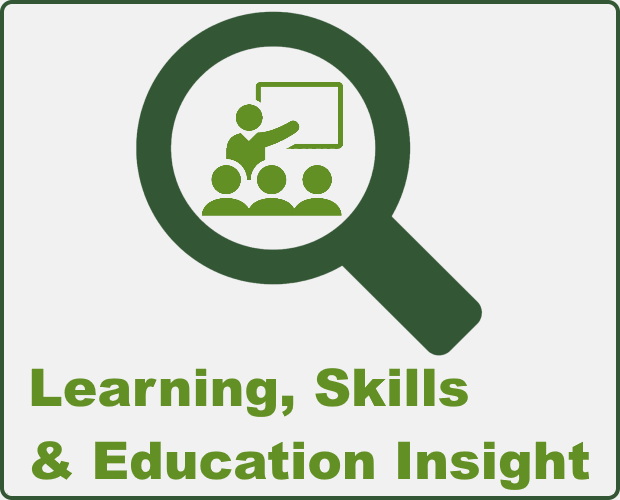The Duty of Education in Building a Comprehensive Educational Website for All
The duty of education in developing a detailed academic site for all is progressively identified as necessary in today's varied culture. By focusing on inclusivity and leveraging innovative mentor techniques together with innovative modern technology, instructors can produce an atmosphere that meets the varied requirements of students. Cultivating cooperation with neighborhood neighborhoods boosts the support network vital for student success. The inquiry stays: how can we efficiently gauge the success and effect of these campaigns to ensure they fulfill their intended function? This inquiry welcomes additional exploration into the characteristics of educational equity and effectiveness.
Value of Inclusivity

When educational websites focus on inclusivity, they develop a society of belonging where every trainee feels valued and encouraged. This setting motivates energetic involvement, cooperation, and common regard amongst learners, helping with more powerful social partnerships. Additionally, comprehensive practices add to boosted scholastic outcomes, as trainees are more probable to involve with the curriculum when they see their identities shown and appreciated.
Additionally, inclusivity prepares trainees for a diverse labor force and culture, equipping them with the abilities needed to browse and add positively to diverse atmospheres. By welcoming inclusivity, educational sites not only satisfy their moral commitments but also enrich the instructional landscape, inevitably profiting pupils, educators, and the area at large. Cultivating inclusivity is crucial for the innovation of equitable and efficient education and learning.
Leveraging Modern Technology for Learning
Incorporating technology right into academic websites improves inclusivity by supplying varied understanding devices and resources tailored to private requirements. Digital systems permit the combination of multimedia resources, such as video clips, interactive simulations, and gamified discovering experiences, which deal with differing finding out designs. This ease of access makes sure that learners can involve with material in methods that resonate with them, fostering a much deeper understanding of topic.
In addition, modern technology helps with real-time responses and individualized understanding pathways. With adaptive understanding innovations, instructional websites can evaluate private efficiency data, allowing tailored web content distribution that meets each learner's pace and proficiency level. This technique not just boosts involvement yet additionally empowers pupils to take ownership of their learning journey.

Innovative Training Techniques

One popular technique is project-based understanding (PBL), which encourages pupils to take part in hands-on projects that deal with intricate concerns or obstacles. This strategy fosters cooperation, top article creative thinking, and analytical abilities, every one of which are important in today's labor force. In a similar way, flipped classrooms have actually obtained grip, where standard discovering is reversed; trainees assess lecture products in the house and take part in interactive tasks during class time, advertising deeper understanding and retention.
Another considerable fad is the integration of gamification right into education and learning. By integrating game aspects into lessons, instructors inspire learners and enhance engagement with competition and benefits. Additionally, differentiated instruction tailors learning experiences to fulfill the diverse needs of trainees, enabling individualized understanding courses that adjust to differing abilities and rate of interests.
Partnership and Community Building
Regularly, collaboration and neighborhood structure are identified as vital parts of effective education and learning, cultivating a comprehensive and encouraging knowing atmosphere. These components produce a framework where students, instructors, and area participants can participate in significant interactions, improving the instructional experience for all individuals.
Partnership urges the sharing of concepts, resources, and know-how, promoting a richer learning process. This vibrant assists to damage down silos within the educational community, advertising interdisciplinary methods that can resolve intricate issues. By functioning with each other, instructors can create innovative curricula that mirror diverse viewpoints while fulfilling the varied needs of students.
Area structure goes hand in hand with collaboration, as it cultivates a sense of belonging among all stakeholders. When individuals feel attached to their educational neighborhood, they are more probable to invest time and sources into collective goals. This shared dedication can lead to boosted motivation, enhanced scholastic end results, and better retention prices.
Additionally, cultivating partnership and area structure can also extend past the classroom, involving parents, regional companies, and businesses. These collaborations can supply support and resources that boost academic possibilities, ultimately adding to a much more extensive instructional site for all.
Gauging Success and Impact
The effectiveness of cooperation and area building in instructional setups can be analyzed through various metrics that measure success and impact. These metrics may consist of student engagement degrees, scholastic performance, retention rates, and explanation neighborhood responses. By utilizing measurable data such as test scores and graduation rates, educational stakeholders can evaluate the total effectiveness of collaborative initiatives.
In addition, qualitative evaluations, such as surveys and focus groups, provide useful insights into participant satisfaction and perceived advantages of community-building activities. Consistently tracking these metrics allows teachers to identify locations of strength and those needing improvement, ensuring that joint initiatives continue to be concentrated and impactful.
In addition, longitudinal researches can assist gauge the long-term results of educational partnerships on pupil end results and community growth. These analyses can expose trends over time, illustrating exactly how continual partnership promotes an atmosphere for finding out and growth.
Inevitably, specifying success in academic setups calls for a complex approach, integrating both measurable and qualitative information. By continuously examining the effect of collaboration and community-building campaigns, instructional websites can fine-tune their strategies, ensuring they satisfy the varied needs of all stakeholders entailed.
Conclusion
In final thought, education and learning serves as a foundation in developing a thorough instructional website that prioritizes inclusivity for all learners. Eventually, the dedication to inclusivity and equity prepares trainees for success in an interconnected and diverse globe, strengthening the transformative power of education and learning.
The significance of inclusivity in academic websites can not be overemphasized, as it plays a crucial function in cultivating an understanding atmosphere that suits varied backgrounds and capacities. Inclusivity makes certain that all trainees, regardless of their socio-economic condition, ethnic background, gender, or learning capabilities, have fair access to educational resources and chances.When instructional sites prioritize inclusivity, they create a society of i loved this belonging where every student feels valued and equipped. By embracing inclusivity, educational sites not only satisfy their honest responsibilities however also improve the educational landscape, eventually profiting trainees, teachers, and the community at large.The performance of cooperation and area building in instructional setups can be examined through different metrics that determine success and effect.